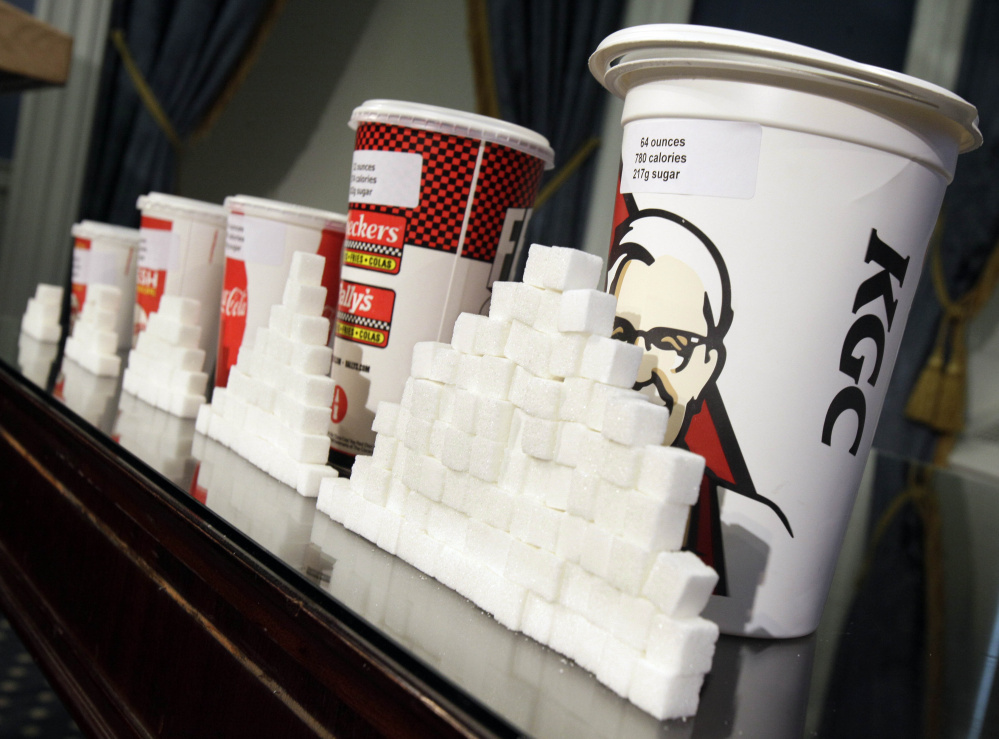Sugar is everywhere in the American diet, and now the Food and Drug Administration will begin highlighting just how much of the sweet stuff is added to what we eat.
Beginning in July 2018, the “Nutrition Facts” labels on packaged foods will list added sugars separately from total sugars. The updated labels will also assign a percent daily value to added sugars, revealing to consumers that, for example, the 65 grams of added sugar in a 20-ounce bottle of Coca-Cola constitutes 130 percent of the daily recommended amount.
The policy change marks an undeniably big win for public-health advocates. But how much will the new sugar-added labels change what’s produced by big food companies and what Americans eat? Looking back at the trajectory of trans fat, which joined the nutrition facts box in 2006, this could constitute the beginning of the end of added sugar.
Artificial trans fats, usually in the form of “partially hydrogenated oils,” are now widely recognized as dangerous. Originally, however, trans fats were considered healthier replacements for saturated fats. That began to change in 1990 after a Dutch study found that partially hydrogenated soybean oil raised LDL cholesterol (the bad kind) and lowered HDL (the good kind). Those findings made trans fats appear at least as harmful as saturated fat.
The food industry had come to rely on partially hydrogenated oils to extend the shelf life of packaged goods and to fry foods at restaurants. The industry was not happy with the Dutch study and pushed for the USDA to conduct its own, with financial support from groups such as the Institute of Shortening and Edible Oils and the National Association of Margarine Manufacturers. The USDA study also found that trans fats might be worse for heart health than saturated fats.
In 1994, reversing its own advice from the decade prior, the Center for Science in the Public Interest filed a petition with the FDA to require nutrition facts labels to list trans fats with saturated fats. Five years later, the FDA made such a proposal (PDF) and by 2003, it had finalized a rule requiring manufacturers to list trans fat content of more than 0.5 grams as a separate line on the nutrition labels. The final blow came last year with the FDA’s decision to ban partially hydrogenated oils, starting in June 2018, unless a specific exemption is granted by the FDA.
Within a few years, it will be virtually impossible for consumers to find trans fats in packaged foods. But consumers had already learned to steer clear even before regulation removed most from the food supply. A 2012 survey found that nearly half of consumers were trying to avoid trans fat. A study by Mintel last year ranked “trans fat-free” as the most important “free-from” claim, with 78 percent of label-conscious shoppers looking for it ….” Even though the trade groups bemoaned the new law and filed a petition to get the FDA to allow low levels of trans fat use, the industry has been preparing for partially hydrogenated oil’s day of reckoning for more than a decade. From 2002 to 2009 – when the requirement was still only to list trans fats, not eliminate partially hydrogenated oil – trans fats have been reduced or eliminated in more than 10,000 products.
Something similar is likely to happen to added sugar. “It is hard for people to know if [added sugars] are in their food without the label,” said Kelly Brownell, dean of Duke University’s Sanford School of Public Policy and an expert in food law and legislation. Once shoppers know, they might not want to buy.
“Information like this on the nutrition facts label begins driving consumer behavior, and that in turn drives the industry,” said Jim O’Hara, director of health promotion policy at Center for Science in the Public Interest.
Send questions/comments to the editors.



Success. Please wait for the page to reload. If the page does not reload within 5 seconds, please refresh the page.
Enter your email and password to access comments.
Hi, to comment on stories you must . This profile is in addition to your subscription and website login.
Already have a commenting profile? .
Invalid username/password.
Please check your email to confirm and complete your registration.
Only subscribers are eligible to post comments. Please subscribe or login first for digital access. Here’s why.
Use the form below to reset your password. When you've submitted your account email, we will send an email with a reset code.